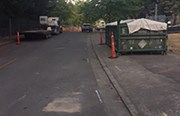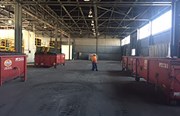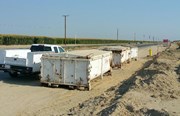Navigating the Waters of Investigation Derived Waste Management
By: CascadeIn the world of environmental remediation, waste management plays a particularly important role. After all, once a site has been successfully remediated, the waste from that site has to be properly profiled, manifested, transported, and disposed of, and there are a ton of regulations on both the state and federal level for doing so. These regulations are important; they set specific work standards for businesses, and they help protect our environment from these harmful substances. That being said, proper management of investigation derived waste (IDW), with the many ins and outs, can be both difficult and time consuming.
Check our webinar IDW 101: What You Need to Know About Managing Investigation Derived Waste to learn more about planning for IDW on your next project.
WHAT IS IDW?
IDW is the waste generated from drilling and site investigation activities required for determining the presence, extent, and/or nature of the particular contamination at a site. IDW may consist of drilling mud, drill cuttings, purge water from test borings or monitoring well development, excess sampling media, personal protective equipment (PPE), and water generated from the decontamination of tooling and sampling equipment. Proper planning before and during the project can significantly reduce the burden and increase the efficiency of quickly removing waste from the site.
HOW IS IDW REGULATED?
Regulations pertaining to IDW and other remediation waste vary from state to state, but in general, contaminated environmental media is not hazardous waste and not subject to the federal RCRA waste regulations or state laws.
However, contaminated environmental media may become subject to regulation under RCRA if it “contains” hazardous waste. EPA considers contaminated environmental media to contain hazardous waste:
- when it exhibits a characteristic of hazardous waste (ignitability, corrosivity, reactivity, or toxicity); or,
- when it is contaminated with concentrations of hazardous constituents from listed hazardous waste that are above health-based levels.
In cases where IDW is contaminated with concentrations of constituents from a listed hazardous waste, such as spent solvents or dioxin-bearing waste, yet the contamination is below health based levels, it’s best to seek a “contained-in-determination” from your authorized State or the EPA. This determination can significantly reduce IDW disposal costs, while minimizing the hazardous waste generator reporting and filing requirements.
WASTE CHARACTERIZATION
All IDW must go through a stringent characterization process to determine if it must be managed as hazardous waste. The initial waste characterization should be made based on the site history and past investigations. If it is determined that the site does not contain a listed hazardous waste and it is not otherwise regulated, then laboratory analysis is needed to determine the characteristics of the waste (toxicity, corrosivity, reactivity and/or ignitability).
Characterization of waste must be determined by laboratory analysis of the representative samples collected at the point of generation, or from composite samples of the IDW if it has been placed in a container. If off-site disposal is the preferred option, then it must be demonstrated through analytical results that the IDW does not exhibit a characteristic of hazardous waste; generator knowledge, typically, will not be accepted.
PLAN AHEAD TO SAVE MONEY ON IDW WASTE MANAGEMENT
Proper planning and communication prior to field investigations can significantly ease the burden of IDW management at the end of the drilling or investigation, while also minimizing the overall expense. Make sure to discuss the type and volume of IDW expected on the project with your drilling contractor. A preliminary waste determination for each type and classification of IDW should be made in advance, including the anticipated quantity and concentration of contaminants. These determinations can be made using available data from previous investigations and/or historical site records.
Utilizing this data to budget and plan for the anticipated IDW can be a cost savings tool, particularly if you expect that a site is quite likely to generate hazardous waste. In cases like these, simple tasks, such documenting/tracking and labeling which drums contain particular sample intervals or boring/well locations, allow for some waste to be managed as non-hazardous and some to be managed as hazardous depending on your analysis. One should also ensure that:
- All IDW is stored in Department of Transportation (DOT) approved containers and on a hard and flat surface.
- Containers are properly closed and acceptable for shipment (not crushed or dented).
- Ensure that all IDW is staged in an area that is accessible by the transportation vehicle that will be utilized for the pick-up so that multiple mobilizations don’t have to be scheduled and charges incurred for pick-ups that cannot be completed due to access.
If you’re worried about navigating the complex waters of managing IDW, you don’t have to be. Yes, there are a lot of regulations, standards, and practices that you must keep pace with, but with the right knowledge and sufficient support for your particular drilling or remediation project, there’s no need to worry.
If you're interested in learning more about IDW or have questions, register for next week's webinar, IDW 101: What You Need to Know About Managing Investigation Derived Waste.



